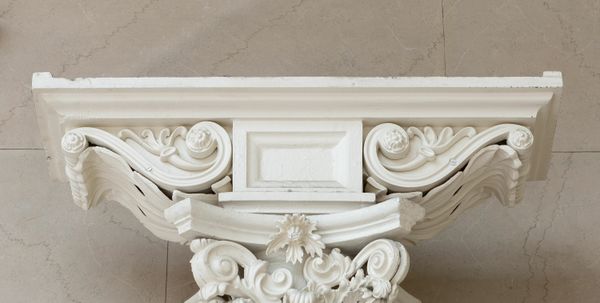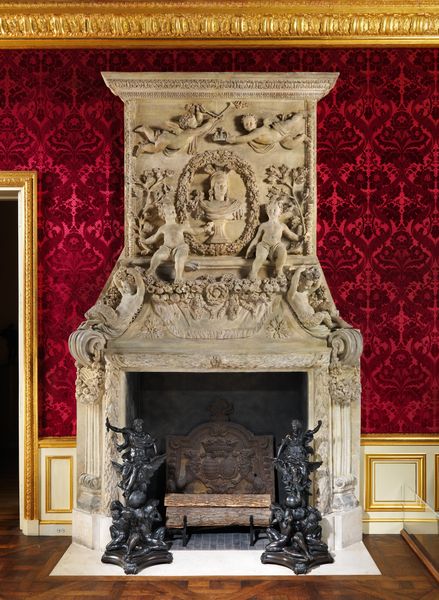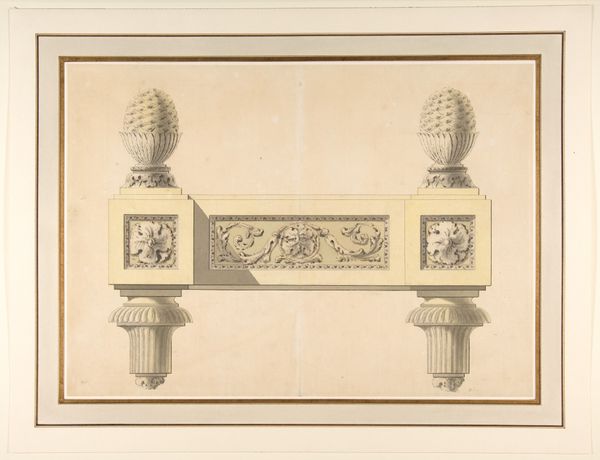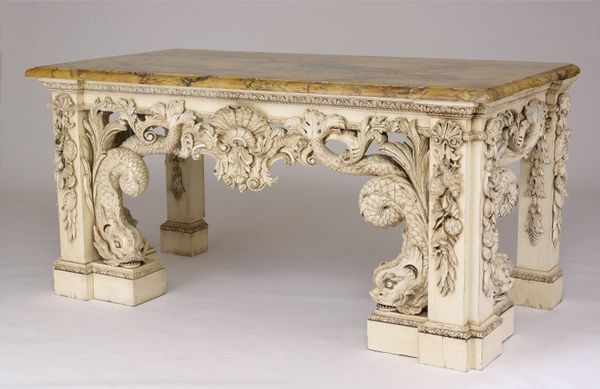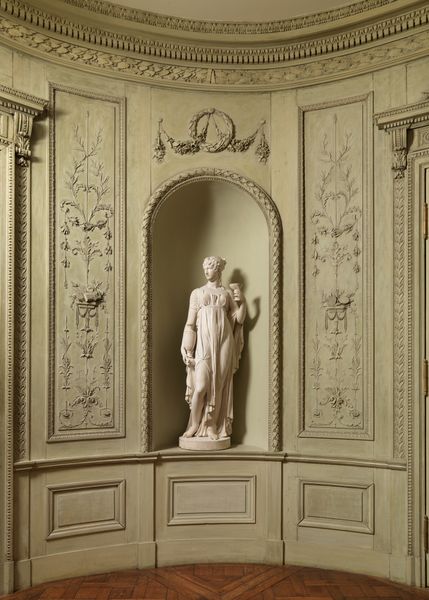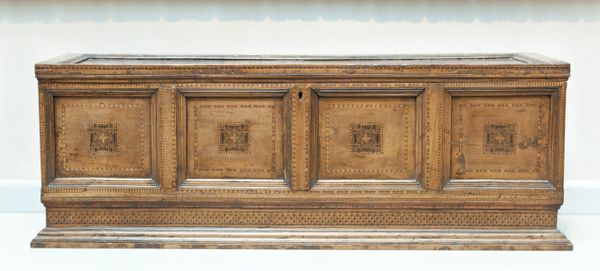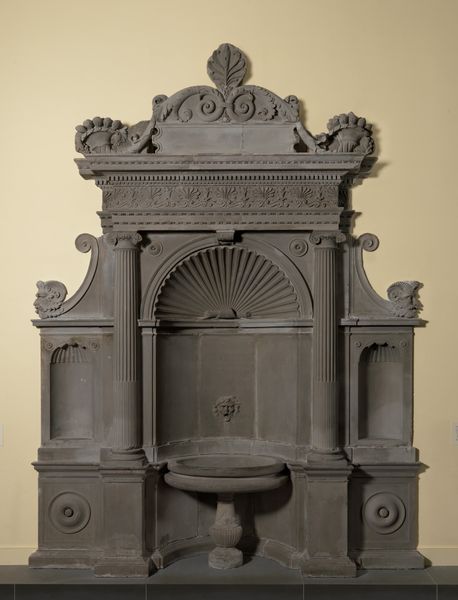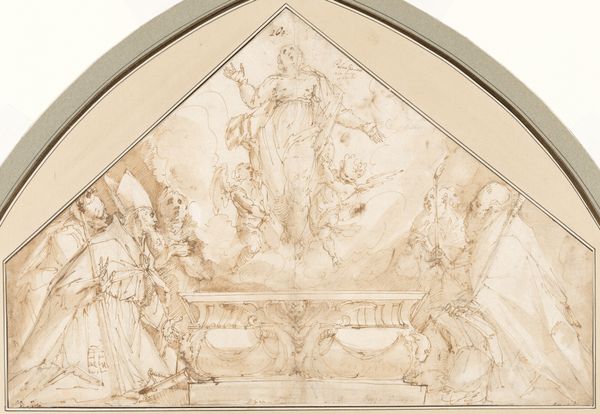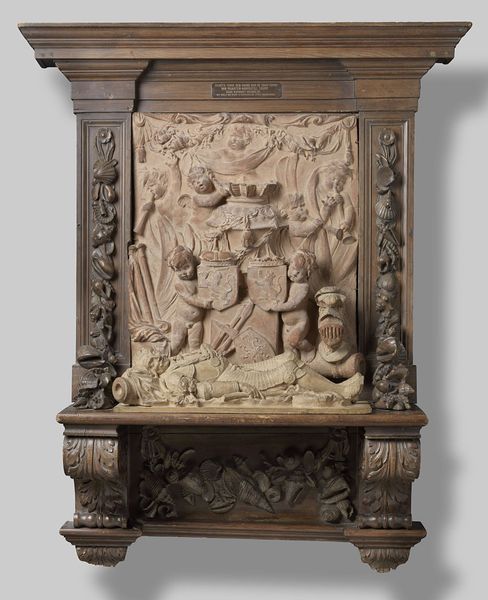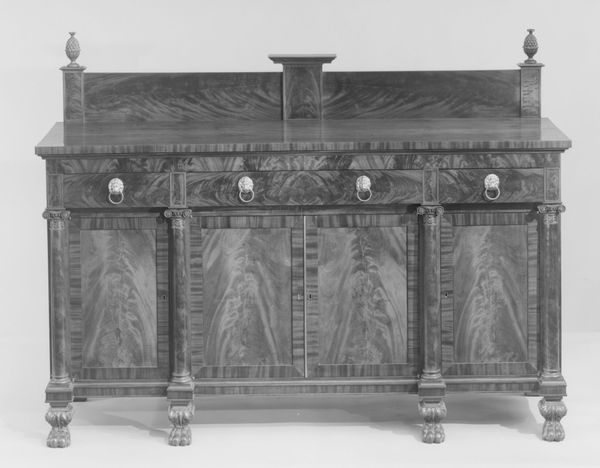
Mantelpiece from Chesterfield House, London 1745 - 1750
0:00
0:00
sculpture, marble
#
stone
#
figuration
#
classicism
#
sculpture
#
decorative-art
#
marble
#
rococo
Dimensions: Overall: 75 × 118 in. (190.5 × 299.7 cm)
Copyright: Public Domain
Editor: Here we have the "Mantelpiece from Chesterfield House, London," made from marble by John Michael Rysbrack around 1745-1750. It's stunning – the figures on either side supporting the lintel seem so stately, almost imposing. What do you see in this piece, considering its place in history? Curator: This mantelpiece is more than just a decorative object; it's a potent symbol of power and status within 18th-century British society. Marble, of course, immediately signals wealth, but consider the figures: they're not merely decorative but recall classical antiquity. This aesthetic choice aligned the owner, presumably a member of the aristocracy, with the perceived virtues and intellectualism of the Roman Empire. It’s a clear visual assertion of their position. Editor: So, the choice of classicism wasn't just aesthetic? Curator: Precisely! The choice to emulate classical forms was deliberate, embedding the patron in a lineage of power and good taste. Chesterfield House itself would have been a stage for displays of wealth and influence, and this mantelpiece played a crucial role. We must also ask, what stories did these images reinforce? Editor: I see. The figures flanking the fireplace become less about beauty and more about this deliberate construction of an identity... almost like propaganda? Curator: In a sense, yes. Elite displays of art and architecture were always intertwined with the politics of imagery and self-presentation. What do you make of the contrast between the grandeur and the everyday function as a fireplace? Editor: It's almost absurd! This incredibly ornate, historical statement piece, designed to warm a room! It highlights the performative aspect of wealth and its display. I never considered that before. Curator: Precisely. This exploration demonstrates how even seemingly simple objects can be read as complex cultural texts.
Comments
No comments
Be the first to comment and join the conversation on the ultimate creative platform.


